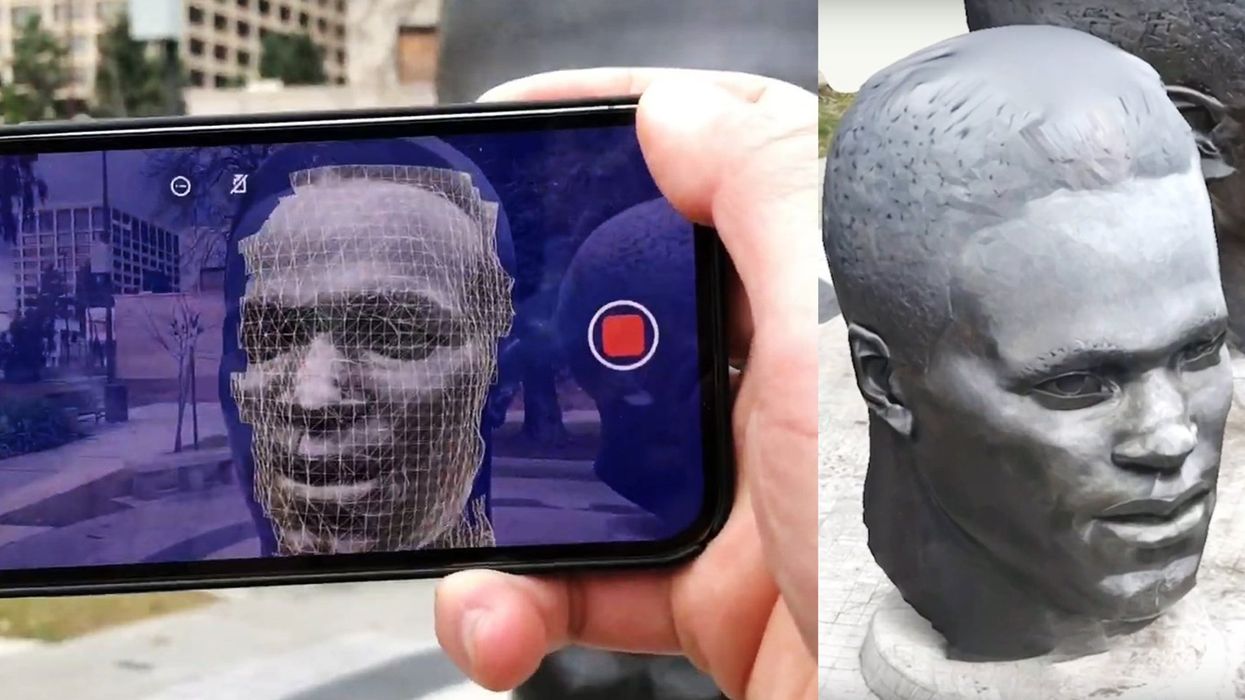The Best Apps for Scanning 3D Objects with Your Phone
Having a LiDAR sensor on your handheld device unlocks a world of creative possibilities.

One of the most exciting ways to use LiDAR is scanning objects around you and creating 3D models out of them. Here are the best apps for scanning objects with your phone.
LiDAR is a technology that has been around since the '60s. It stands for Light Detection and Ranging, and it's a sensor that is capable of measuring the amount of time laser light takes to hit an object and bounce back.
This creates a real-time depth map of objects in your surrounding area. Originally used for military purposes and satellite tracking, LiDAR sensors have been rolling out in select handheld devices over the last few years. Starting with the iPad Pro, and now included in the iPhone 12 Pro as well, the benefits of LiDAR are numerous for augmented reality applications and camera-related functions as well.
However, for VFX and CG artists, there is a whole world that is slowly being unlocked. The world of scanning objects with your phone.
If you want to find yourself utterly obsessed with scanning everything you see that looks even remotely interesting, go ahead and get yourself a LiDAR-equipped phone. You'll soon be scanning everything from your own head to every single room or shop you walk into.
As you start to play with these various scanning apps, you'll find that they aren't all created equal. The apps are numerous, and they all offer very different levels of detail, processing time, and overall usability.
In this article, I'll try and parse through all the ones I've used and give you the rundown on which ones I like.
Polycam
Polycam is probably the most polished of the apps that I use. I think the way that it provides visual feedback as you record your scan is the most effective. It also gives you a visual representation of the scan and where it placed the various camera samples as it records. You can see all of this information before you move to the step of fully processing whatever you're capturing.
Polycam shines less when you're grabbing a scan of a larger object or space, but more if you're focusing mostly on one specific area (like the large statue in the video example above).
Scaniverse
Scaniverse is easily my personal favorite and most used of all of these apps. It's the most useful phone scanner as of right now for quickly creating interiors. Particularly interiors that aren't the main feature of the scene (a window in the background, a storefront, etc.). Scaniverse is air-tight with these types of scans. For smaller objects, I'd still go with Polycam for the most part.
With Scaniverse, you can scan a whole room in no time at all, and potentially finish it before anyone starts to look at you weird. With Scaniverse, I've built a small library of gas stations, stores, and my friend's apartments in no time. I love dropping those in behind a window or out of focus in the background.
Bellus 3D FaceApp
If you just simply want a 3D version of your head and face, this is the app. In a matter of a minute or two, you've got a textured 3D model of your head, and you can send that .obj file right into your software of choice.
The app was seemingly developed for dental purposes, and other medical uses (they have a "mask fitter" function in the app). But I think there is no better way to turn your head into an expressionless video-game NPC-type model that you can put into anything.
3D Scanner App
The first app that appears in the app store and the one that most people seem to use is simply called 3D Scanner App. I have had wildly mixed results with this app. A couple of my very best scans came from this app, but I've also had a ton that just completely didn't work out.
I like that this app allows you to select between higher-detail and lower-detail scans. I like the visual feedback that allows you to get a sense of the geometrical density of the scan. But for me, this one is just a tiny bit less reliable than Polycam has been.
I recommend busting this one out when you are having trouble with one of the other apps.
Scandy Pro
Scandy Pro feels like it will eventually be the best app. I'm not sure why, but it just seems like it's almost there. I've had some of the most accurate and photoreal scans out of Scandy, but it feels like it only really happens one out of every four tries. However, the features and usability feel almost the most high-end and responsive.
I also believe this app is compatible with more than just the LiDAR enabled phones, because it's capable of using the front-facing true-depth sensor.
If it gets a few updates down the line, this app might be the best one of the bunch.











